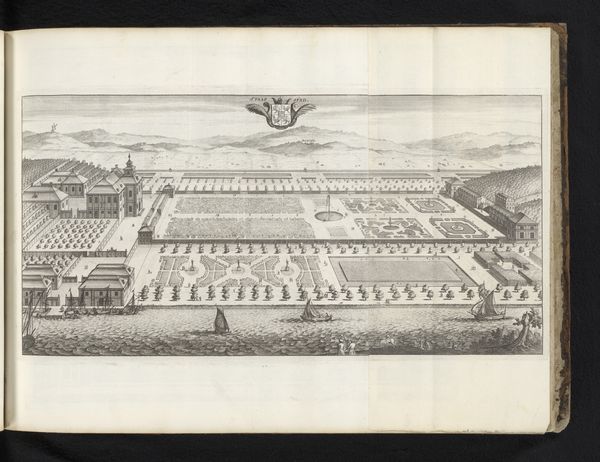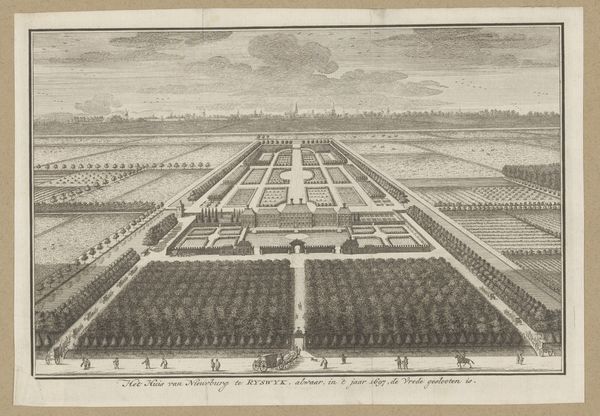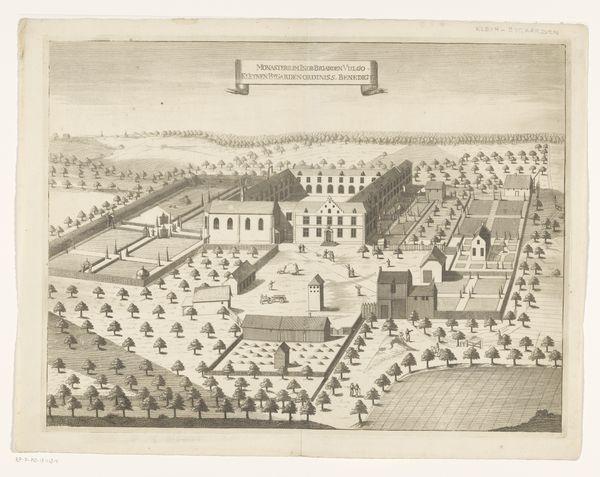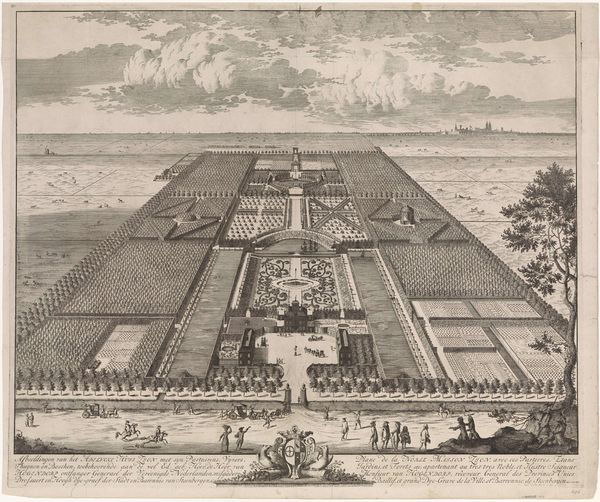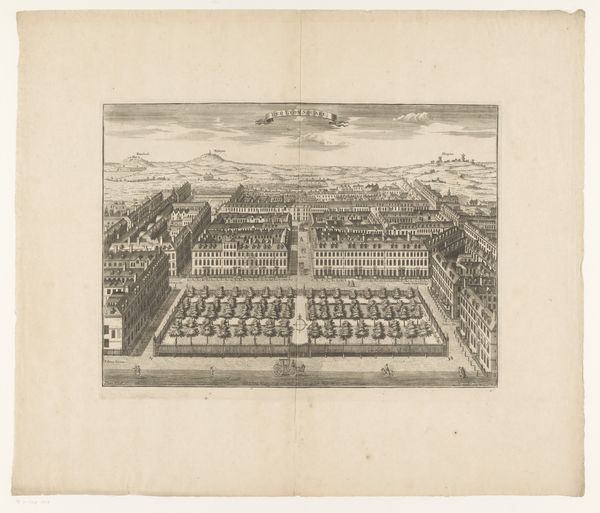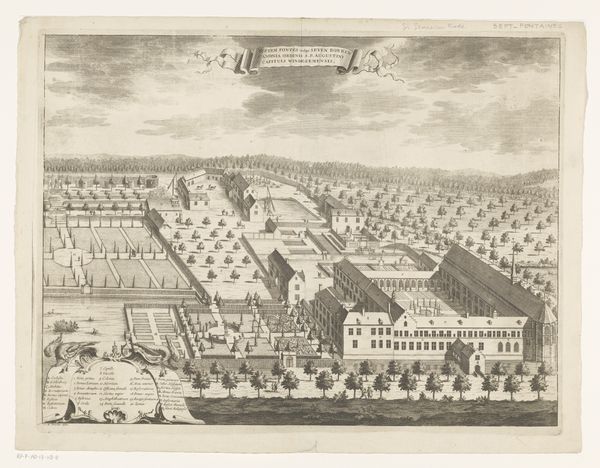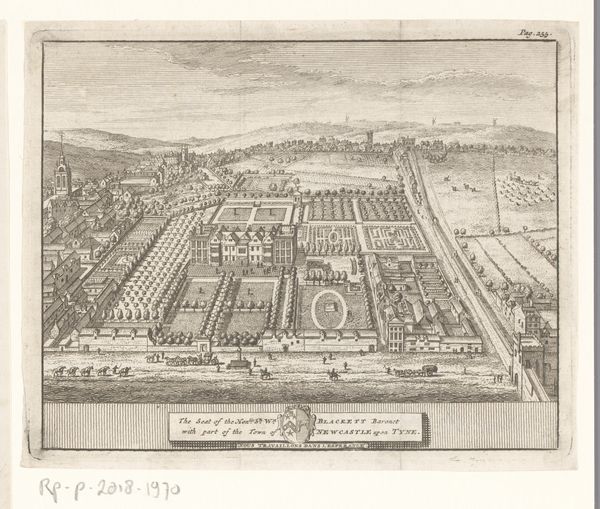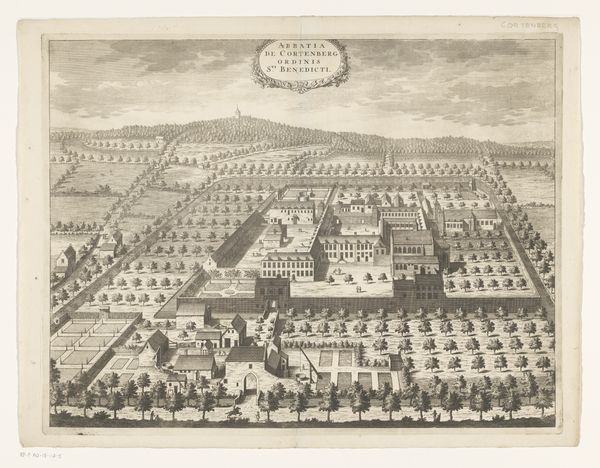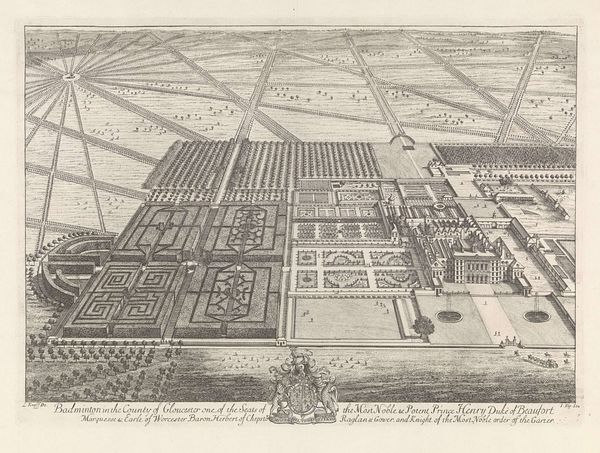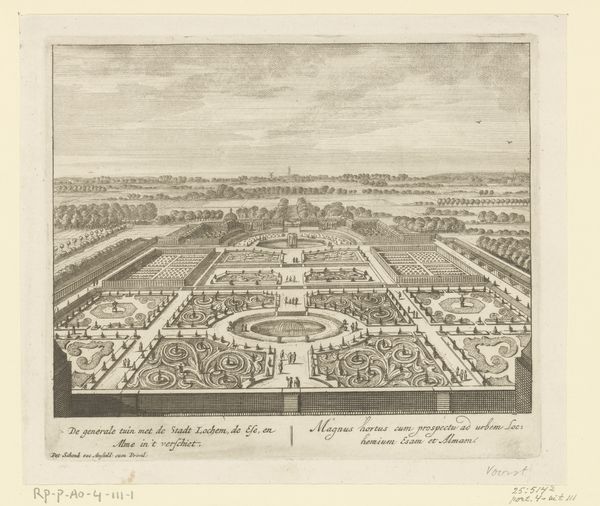
print, engraving, architecture
#
baroque
# print
#
landscape
#
cityscape
#
engraving
#
architecture
Dimensions: height 215 mm, width 327 mm
Copyright: Rijks Museum: Open Domain
Editor: Here we have an engraving entitled "View of Sanssouci Palace and its gardens" created between 1747 and 1774, currently residing in the Rijksmuseum. It's fascinating how this very ordered landscape evokes a sense of control, but also a subtle feeling of artifice, like a stage set. How do you interpret this meticulously planned space? Curator: This image is an intriguing window into the Baroque era. What strikes me most is the relentless use of symmetry. Look at how the gardens mirror each other on either side of that central axis, leading straight to the palace. It speaks volumes about the desire for order and control that defined the era. Does that sense of control come across to you? Editor: Definitely, the strict symmetry is so imposing. But I’m curious about why someone would choose to represent space in this way. What were they trying to communicate? Curator: It's a constructed ideal. Royal power and the wealth necessary to manipulate nature on this scale. The geometric patterns are symbolic, each shape meticulously designed to reflect power and permanence. Beyond simple authority, I would venture to say it is a very material and visual attempt to reflect the Age of Enlightenment values like balance and reason, rendered into a tangible landscape. Editor: So it's like the garden itself is a symbol, beyond just being a pleasant place? Curator: Precisely. Consider the palace’s name, Sanssouci – "without worries." But is such a perfect space a place to truly escape anxiety, or simply an illusion thereof? Perhaps it serves more as an emblem of curated bliss than an embodiment of it. Editor: I never considered that tension, but now that you mention it, it makes this rigid symmetry much more thought-provoking! Curator: Yes. The cultural memory encoded within the garden design whispers of grand ambitions and controlled visions, reminding us that even "natural" spaces are often deeply shaped by human ideology. Editor: That’s really given me a new perspective. I had thought about the visual aspects but missed the layers of symbolic meaning, like this constant need to control the environment. Thanks for making me rethink that!
Comments
No comments
Be the first to comment and join the conversation on the ultimate creative platform.
